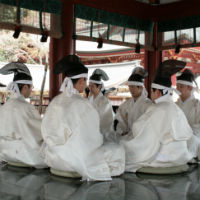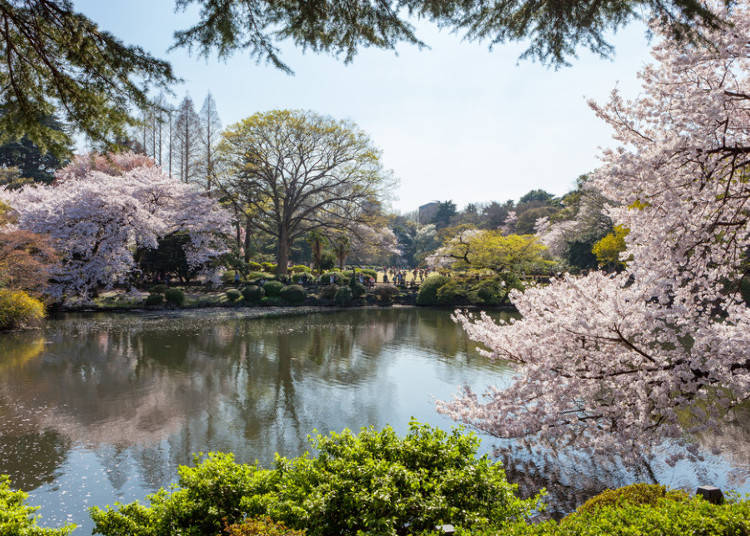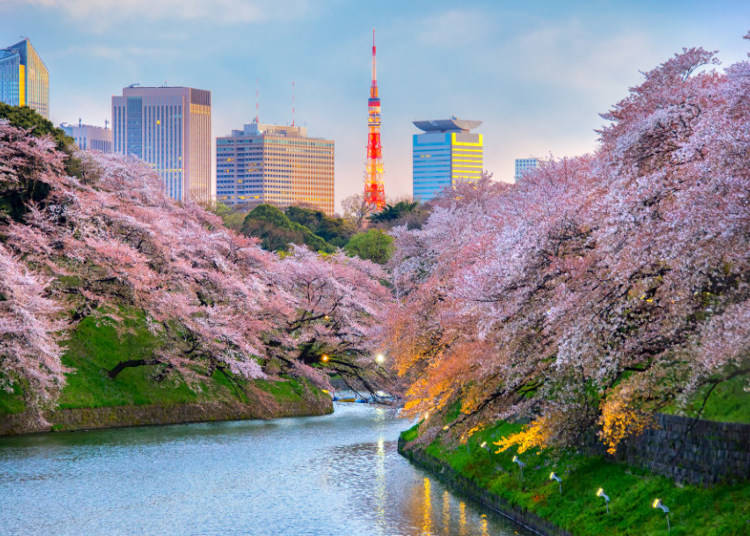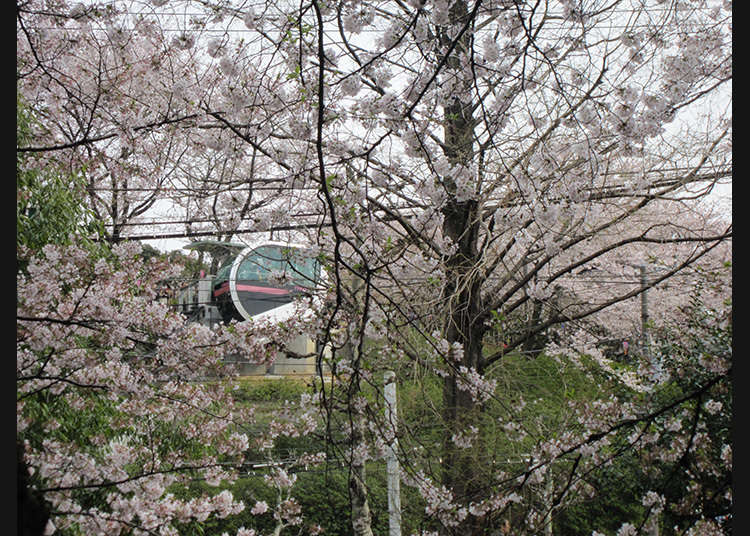March Festivals and Popular Cherry Blossom Viewing Spots
In Japan, March was traditionally known as ‘yayoi,’ meaning ‘new life.’ This is thought to be because the coming of spring gives a growing sense of vitality.
For most Japanese, March brings to mind the Hina doll festival. Families decorate their houses with doll displays to pray for the healthy growth of their daughters. Also, the end of March usually sees the first cherry blossoms in Tokyo.
Here we introduce some of the March festivals in the Greater Tokyo area, as well as popular spots for cherry blossom viewing.
March festivals
 The Jindaiji Temple Daruma FairJindai-ji Temple
The Jindaiji Temple Daruma FairJindai-ji TempleMarch 3 to 4,2018
Darumas are small red dolls that are said to bring luck, and a daruma fair is an event where you can buy them. The Jindaiji Temple Daruma Fair is the largest in the Kanto area and involves hundreds of stands, some of which sell food and souvenirs. On the same day, a traditional ritual known as Hyakumi Kuyo is held, in which offerings of sweets and tea are made in honor of Yakuyoke Ganzan Daishi, a famous monk associated with Jindaiji Temple, in order to ward off bad luck and help wishes to become fulfilled. Hiwatari-sai: The Fire-Walking Festival at Mount TakaoTakaosan Yakuo-in
Hiwatari-sai: The Fire-Walking Festival at Mount TakaoTakaosan Yakuo-inMarch 11,2018
In Japanese Buddhism, fire is believed to have a cleansing effect that removes bad luck. In this festival, Yamabushi monks and practitioners of Shugendo Buddhism first pray to a roaring fire for world peace, health, safety from accidents, and other blessings, before slowly walking over smoldering embers while chanting. Senso-ji Temple Honzon Jigen-eSenso-ji Temple
Senso-ji Temple Honzon Jigen-eSenso-ji TempleMarch 18,2018
A ceremony commemorating the appearance on earth of Senso-ji Temple’s deity, the bodhisattva Kannon. During the day, a spectacular golden dragon dance is performed in the western part of the temple grounds and the marveling voices of worshippers can be heard across the premises. A special red paper talisman is also given out at the prayers during this festival (application required). Ken-ei-hiko-shiki (Poetry Dedication Ceremony)Tsurugaoka Hachimangu
Ken-ei-hiko-shiki (Poetry Dedication Ceremony)Tsurugaoka HachimanguMarch 25,2018
A ritual where offerings of poetry are made to the gods. Priests of the Tsurugaoka Hachimangu Shrine wear traditional robes and black-lacquer headgear and recite poetry to music. Works selected from around 900 dedicated from all over Japan are read, starting with those by Minamoto no Sanetomo, a famous waka poet who was associated with the shrine. Rinkai Fukutoshin Tulip Festival 2018National Museum of Emerging Science and Innovation
Rinkai Fukutoshin Tulip Festival 2018National Museum of Emerging Science and InnovationMarch 31,2018
Japan’s biggest tulip festival in terms of variety. Cut tulips are handed out for free. There is a stamp rally that encourages you to tour the different flower beds, and events such as guided tours and workshops are available. In the Chowa-no-kadan flower beds located in Symbol Promenade Park’s Central Square, you may be able to see tulips and the first cherry blossoms blooming together.
Popular Cherry Blossom Viewing Spots in Tokyo
 Shinjuku Gyoen National GardenNearest Station:Shinjuku-Gyoemmae Station
Shinjuku Gyoen National GardenNearest Station:Shinjuku-Gyoemmae StationPark entrance fee: \200. Opening hours: 9:00 a.m. – 4:00 p.m. (closes at 4:30 p.m.). The park is open every day throughout the cherry blossom viewing period from March 15 to April 24. The extensive park area boasts around 1,100 cherry blossom trees of around 65 varieties. As different varieties bloom at different times, cherry blossoms can be enjoyed throughout the season. Bringing your own alcohol and using play equipment are prohibited.
 Ueno ParkNearest Station:Ueno Station
Ueno ParkNearest Station:Ueno StationOpening hours: 5:00 a.m. – 11:00 p.m. Entry between 11:00 p.m. and 5:00 a.m. is prohibited. The park management office is open from 8:30 a.m. to 5:15 p.m. A beloved public cherry blossom viewing spot since the 16th century. Around 800 cherry blossom trees bloom within the 538,000m2 park area, focused around the central avenue.
 ChidorigafuchiNearest Station:Hanzomon Station
ChidorigafuchiNearest Station:Hanzomon StationThe area around Chidorigafuchi on the northwest side of the Imperial Palace is a popular cherry blossom viewing spot. About 1,000 cherry trees bloom here and you can take a picture of cherry trees with the stone walls of Edo Castle, today's Imperial Palace, in the background. In Chidorigafuchi Park between Chidorigafuchi (west side of the Imperial Palace) and the British Embassy, you can see about 170 cherry trees, so we highly recommended taking a relaxing walk around the neighborhood.
Photo / General Incorporated Association Chiyoda Tourism Organization Sumida ParkNearest Station:Asakusa Station
Sumida ParkNearest Station:Asakusa StationAlthough it is a famous park for watching fireworks in the summer, Sumida Park is known for its magnificent cherry blossoms during spring. You can take pictures of not only about 600 cherry trees but also of TOKYO SKYTREE(R) towering in the background. In addition, cherry blossom viewing from a boat will surely make for an unforgettable memory.
 Inokashira ParkNearest Station:Kichijoji Station
Inokashira ParkNearest Station:Kichijoji StationThere are about 500 cherry trees in this park and you can enjoy cherry blossom viewing from early March to late April. The cherry trees seen from the Nanai Bridge in the middle of the Inokashira pond are especially wonderful. About 250 cherry trees lower their branches around the pond and their reflection on the water surface is exceptionally pretty. The pond with cherry petals floating on the surface is also an amazing sight.
 Meguro RiverNearest Station:Meguro Station
Meguro RiverNearest Station:Meguro StationAbout 800 cherry trees blossom along Megurogawa which stretches for about 3.8 kilometers from the Ikejiri-Ohashi area to Kamenokobashi under the Tokyu Meguro Line. There are no facilities such as parks but you can enjoy cherry blossom viewing while having drinks and meals in the cafes and restaurants along the river.
 Yoyogi ParkNearest Station:Harajuku Station
Yoyogi ParkNearest Station:Harajuku StationYoyogi Park is a great cherry blossom viewing spot with convenient access from Shinjuku and Shibuya. It is the third largest park in Tokyo and has 730 cherry trees in total. You can view cherry blossoms while sitting on the grass in the middle of the square and enjoying hanami bento, a real cherry blossom lunch.
(C) Tokyo Metropolitan Park Association Koishikawa Korakuen GardensNearest Station:Iidabashi Station
Koishikawa Korakuen GardensNearest Station:Iidabashi StationKoishikawa Korakuen Gardens is a Japanese feudal lord garden built in 1629, featuring Chinese and Japanese landscapes and different kinds of cherry trees. In particular, the beautiful cherry blossoms reflected on the surface of the pond in the center of the garden called Daisensui makes every park goer stop in amazement for a moment or two. The opening hours are from 9:00 a.m. to 5:00 p.m. (admission until 4:30 p.m.). Open every day during the cherry-blossom viewing period.
(C) Tokyo Metropolitan Park Association Rikugien GardensNearest Station:Komagome Station
Rikugien GardensNearest Station:Komagome StationThe completion of this park took about seven full years and the weeping cherry is especially popular as a symbol of Rikugien Gardens. About 15 meters high and about 20 meters wide, it blooms like a waterfall and it is lit up during the night, making for an extraordinarily beautiful sight. The opening hours are from 9:00 a.m. to 5:00 p.m (until 9:00 p.m. during light-up period). Admission is until 30 minutes before closing. The shibazakura tree and daimyo garden are lit up from March 16 (Wed) to April 2 (Sun). Open every day during the cherry-blossom viewing period.
(C) Tokyo Metropolitan Park Association Asukayama ParkNearest Station:Oji Station
Asukayama ParkNearest Station:Oji StationWith around 600 cherry trees, Asukayama Park has been popular among the public as a cherry blossom viewing spot for a long time. A monorail runs through the garden and the cherry trees viewed from above are a rare and special sight. The monorail runs from 10:00 a.m. to 4:00 p.m. At times there may be service suspension due to maintenance.